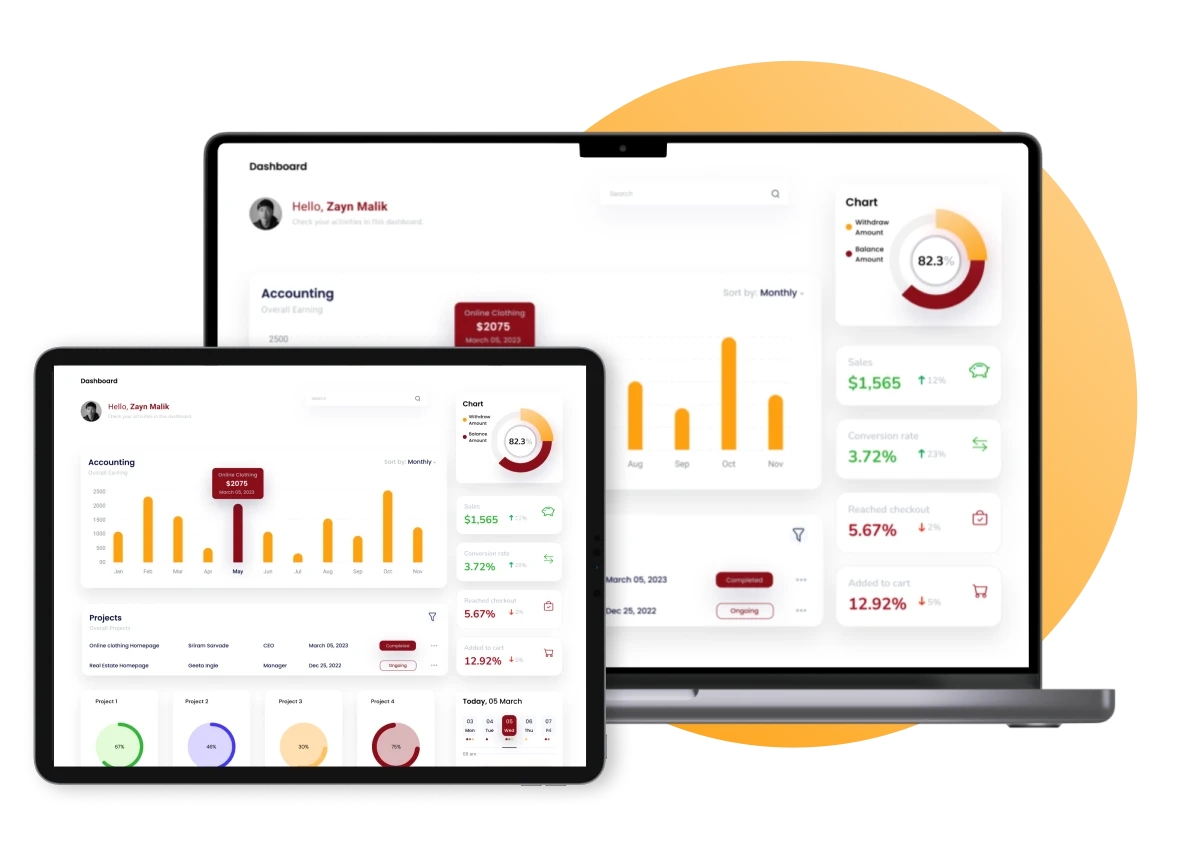Did you know that 75% of businesses fail within the first year due to poor financial risk management? Financial risk refers to the potential for loss or negative impact on an investment or business due to various factors. It is crucial to understand and control financial risk to safeguard your investments and ensure the stability and success of your business, especially in the dynamic Singapore market landscape.
In this article, we will explore the concept of financial risk and provide you with strategies to effectively manage and control it with financial software.
Table of Content:
Table of Content
Key Takeaways
|
What is Financial Risk?
Financial risk refers to the chance that an investment or business will experience negative outcomes or unexpected events leading to financial losses. It encompasses various factors such as volatility, uncertainty, and potential market disruptions. Understanding the concept of financial risk is vital for investors and businesses in making informed decisions and implementing appropriate risk management strategies.
By analyzing risk factors and conducting thorough risk assessments, one can effectively mitigate financial risk and safeguard investments.
There are different types of financial risks that individuals and businesses should be aware of. Some of the common ones include:
| Type | Description |
|---|---|
| Market Risk | Risk associated with fluctuations in market prices or values |
| Credit Risk | Risk arising from the possibility of borrowers defaulting on debt obligations |
| Liquidity Risk | Risk related to the ability to convert assets into cash quickly without significant loss |
| Operational Risk | Risk associated with internal processes and systems within a business |
| Systemic Risk | Risk that can affect the entire financial system |
Identifying potential risks, assessing their likelihood and impact, developing risk management strategies, and continuously monitoring and adjusting those strategies is crucial for businesses to effectively manage financial risk. Failure to manage financial risk can lead to detrimental impacts such as increased volatility, losses, contagion, flight to safety, and regulatory response.
To properly control financial risk, businesses can utilize risk management software such as HashMicro. This software offers multi-level analytical tools, allows for tracking profit and loss against budget and forecast, provides budget S curves for monitoring project performance, offers financial statements with budget comparison, and incorporates financial ratios for performance evaluation.
By employing risk management strategies and utilizing financial software solutions, businesses can effectively manage financial risk and navigate through the dynamic Singapore market landscape, ensuring the safeguarding of their investments.
Types of Financial Risks
There are several types of financial risks that individuals and businesses should be aware of. Understanding these different types of financial risks is crucial for effective risk management.
Market Risk
Market risk refers to the potential losses resulting from fluctuations in market prices or values. It is influenced by factors such as changes in supply and demand, economic conditions, and geopolitical events. Investors and businesses face market risk when the value of their assets, such as stocks or commodities, fluctuates due to market conditions.
Credit Risk
Credit risk involves the possibility of borrowers defaulting on debt obligations, leading to financial losses. Lenders, banks, and investors face credit risk when borrowers are unable to repay their loans or fulfill their financial obligations. This type of risk is influenced by factors such as the borrower’s creditworthiness, economic conditions, and changes in interest rates.
Liquidity Risk
Liquidity risk pertains to the ability to convert assets into cash quickly without significant loss. It arises when individuals or businesses encounter difficulty selling their assets or accessing cash when needed. Factors that contribute to liquidity risk include the availability of buyers or liquidity providers, market conditions, and changes in investor confidence.
Operational Risk
Operational risk is associated with internal processes and systems within a business. It encompasses the risk of operational failures, such as errors, system malfunctions, or fraud. Operational risk can result in financial losses, reputational damage, or legal and regulatory consequences. Businesses should implement robust internal controls and risk management frameworks to mitigate operational risk.
Systemic Risk
Systemic risk refers to risks that can affect the entire financial system. It arises from factors that can lead to widespread instability, such as economic crises or policy changes. Systemic risks have the potential to trigger a domino effect, impacting multiple sectors and institutions. Understanding and managing systemic risks is crucial for maintaining financial stability and preventing systemic crises.
By identifying and understanding these different types of financial risks, individuals and businesses can develop effective risk management strategies and safeguards. Implementing appropriate measures to mitigate these risks is essential for maintaining financial stability and protecting investments.
Financial Risks for Businesses
Businesses face various financial risks that can impact their operations and profitability. It is crucial for businesses to effectively manage these risks to ensure ongoing protection and success. This section will discuss the key steps that businesses can take to identify, assess, develop strategies, and monitor and adjust their risk management practices.
Identify potential risks
The first step in managing financial risks is to identify potential risks. This can be done by conducting comprehensive risk assessments which involve evaluating the likelihood and potential impact of each risk. By thoroughly analyzing their business operations, market conditions, and industry trends, businesses can identify potential risks early on and take proactive measures to address them.
Assess likelihood and impact
Once potential risks have been identified, businesses need to assess the likelihood and potential impact of each risk. This involves evaluating the probability of the risk occurring and the potential consequences it may have on the business. By conducting a thorough risk assessment, businesses can prioritize risks and allocate resources to address the most significant ones.
Develop risk management strategies
After assessing the risks, businesses can then develop risk management strategies tailored to their specific needs and circumstances. These strategies may include diversification, hedging, insurance, and contingency planning. Diversification involves spreading investments across different assets to reduce the impact of a single risk. Hedging is a strategy that involves using financial instruments to offset potential losses. Insurance provides protection against specific risks through policies. Contingency planning involves creating backup plans and resources to mitigate potential risks.
Monitor and adjust
It is essential for businesses to continuously monitor and adjust their risk management strategies. The business environment is dynamic, and risks can change over time. Regular monitoring allows businesses to stay updated on potential risks and make necessary adjustments to their strategies. By utilizing risk management software such as HashMicro, businesses can streamline their risk monitoring and adjustment processes, ensuring ongoing protection and success.
| Risk Management Strategies | Description |
|---|---|
| Diversification | Spreading investments across different assets to reduce the impact of a single risk |
| Hedging | Using financial instruments to offset potential losses |
| Insurance | Providing protection against specific risks through policies |
| Contingency Planning | Creating backup plans and resources to mitigate potential risks |
By following these steps and implementing effective risk management strategies, businesses can navigate the financial risks they face and ensure ongoing protection and success in their operations.
Impacts of Financial Risk
Financial risk can have various impacts on investments, businesses, and the overall economy. Understanding these impacts is crucial for effective risk management at both individual and systemic levels.
Volatility
Volatility refers to the rapid and significant price swings in financial markets, which can create uncertainty and risk.** It is essential for individuals and businesses to recognize and adapt to market volatility to protect their investments and make informed decisions.
Losses
Financial losses are a common consequence of financial risk, and they can have substantial negative effects on individuals, businesses, and economies.** Managing and minimizing losses is a key aspect of risk management, requiring careful planning and proactive strategies to protect financial well-being.
Contagion
Contagion occurs when financial distress in one entity or sector spreads to others, potentially leading to systemic risks.** This interconnectedness within the financial system highlights the need for effective risk management to prevent the spread of financial crises and its adverse effects on the economy.
Flight to Safety
During times of financial crisis, investors often engage in a “flight to safety” by moving their investments to safer assets.** This flight to safety illustrates investors’ desire to protect their capital and mitigate potential losses, emphasizing the importance of risk management during turbulent market conditions.
Regulatory Response
Regulatory responses to financial risks often involve implementing stricter regulations and safeguards to prevent future crises.** Governments and regulatory bodies play a crucial role in mitigating financial risks by establishing rules and oversight to maintain stability and protect market participants.
By understanding the impacts of financial risk, individuals and businesses can implement effective risk management strategies to safeguard their investments, navigate uncertain market conditions, and contribute to the overall stability of the economy. It is essential to stay informed, assess potential risks, and adapt risk management practices to address the evolving financial landscape.
How to Identify Financial Risks?
Conduct a risk assessment
Identifying financial risks is a crucial step in managing them. Effective risk identification requires conducting a comprehensive risk assessment, which involves evaluating various factors such as market conditions, business operations, financial statements, and regulatory environments.
Review financial statements
Reviewing financial statements provides insights into a company’s financial health and potential risks it may face. By analyzing key financial indicators, businesses can identify areas of vulnerability and take necessary measures to mitigate risk.
Monitor market trends
Monitoring market trends allows businesses to stay informed about potential risks and opportunities. By tracking changes in consumer behavior, economic conditions, and industry developments, organizations can proactively address emerging risks and adapt their strategies accordingly.
Analyze competitive landscape
Analyzing the competitive landscape helps identify potential risks arising from market competition. By understanding the actions and strategies of competitors, businesses can anticipate challenges and develop countermeasures to protect their market position.
Evaluate regulatory environment
Evaluating the regulatory environment ensures compliance with relevant regulations and identifies potential risks associated with regulatory changes. By staying up-to-date with regulatory requirements and anticipating regulatory shifts, businesses can adjust their operations and mitigate compliance-related risks.
Conduct scenario analysis
Conducting scenario analysis involves simulating different potential scenarios to assess their impact on financial risk. By considering various hypothetical situations, businesses can identify vulnerabilities and develop contingency plans to minimize potential losses.
How to Control Financial Risk with HashMicro Financial Software
HashMicro offers financial software solutions that enable businesses to effectively control financial risk. The software provides multi-level analytical tools that allow businesses to analyze and manage risks at different levels, from individual transactions to overall financial performance.
One of the key features of HashMicro financial software is the ability to track profit and loss compared to budget and forecast. This allows businesses to monitor their financial performance and identify any deviations from the planned budget.
Another useful tool provided by HashMicro financial software is the Budget S curve. This feature allows businesses to monitor the performance of projects and track their progress against the planned budget. It provides a visual representation of the project’s financial performance over time.
HashMicro financial software also includes a financial statement with budget comparison feature. This allows businesses to compare their actual financial results with the budgeted amounts and identify any discrepancies. It provides valuable insights into the financial performance of the business and helps in identifying areas that require attention.
Additionally, this accounting system offers financial ratios for performance evaluation. These ratios help businesses evaluate their financial health and performance by comparing various financial metrics. It enables businesses to make informed decisions and take necessary actions to improve their financial position.
By utilizing HashMicro financial software, businesses can enhance their risk management capabilities and make informed decisions to control financial risk.
Conclusion
Effectively managing financial risk is crucial for safeguarding your investments and ensuring the success of your business in the dynamic Singapore market landscape. By understanding the concept of financial risk and implementing appropriate risk management strategies, you can mitigate potential losses and navigate through uncertain market conditions.
By utilizing financial software solutions like HashMicro, you can enhance your risk control capabilities and make informed decisions to safeguard your financial well-being. Remember, effectively managing financial risk is a continuous process that requires vigilance and adaptability to ensure the long-term success of your investments and businesses.
Grab the limited chance to try the free demo now!



























































